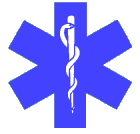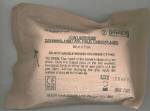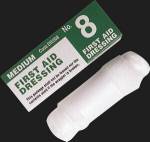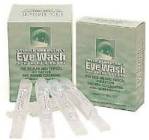Practical Airsoft Recommends:
![]()
Stargate S.G. 1 - Series 1
![]()
Stargate S.G. 1 - Series 2
![]()
Stargate S.G. 1 - Series 3
![]()
Stargate S.G. 1 - Series 4
![]()
Stargate S.G. 1 - Series 5
![]()
Stargate S.G. 1 - Series 6
First Aid in Airsofting...
By Darren Deakin

As we all know, airsofting is a relatively safe sport, but with all sports, injuries can (and will) happen. All organised events should have a first aider on site, qualified to at least First Aid at Work level. Sometimes injuries occur when no first aider is available, so the first part of this article deals with practical advice on how to deal with some of the most common injuries, and to give a bit of a 'refresher' to those people who hold first aid certificates. It is not designed to replace an organised first aid course, and my advice is, if you get chance to attend, do so.
Firstly, lets deal with equipment. It is no good dealing with an injury, if you don't have the right bits and pieces in the first place (although improvisation, in some cases, is acceptable). A good site will have a comprehensive first aid kit available, what I'm going to talk about is a personal kit, for use by yourself.
 Many chemists and supermarkets produce ready-made first aid kits, with Boots and Superdrug having a good range of kit. You can either buy a ready-made kit, or make your own up.
Many chemists and supermarkets produce ready-made first aid kits, with Boots and Superdrug having a good range of kit. You can either buy a ready-made kit, or make your own up.
The idea is to make a small personal kit you can carry with you. Contents should include things such as wound dressings, blister dressings, wound-cleaning spray, wound wipes, adhesive dressings, etc.

 Wound Dressings: Small, sterile dressing pads (sometimes called Ambulance Dressings) used to cover deep cuts, or cuts with a lot of bleeding. Only one small dressing will be required as a 'just in case', or for rapid initial treatment, and should not take up much space. A type of dressing called the Cederroth Bloodstopper from SPServices (see links) is an excellent dressing - expensive, but worth it.
Wound Dressings: Small, sterile dressing pads (sometimes called Ambulance Dressings) used to cover deep cuts, or cuts with a lot of bleeding. Only one small dressing will be required as a 'just in case', or for rapid initial treatment, and should not take up much space. A type of dressing called the Cederroth Bloodstopper from SPServices (see links) is an excellent dressing - expensive, but worth it.
 Adhesive Dressings: The typical 'plaster' has evolved a lot in recent years. New and improved dressings are available, which offer lots of variety. The choice is entirely up to you, stick with the bog-standard fabric dressing, or go for something extravagant like the waterproof gel 'wound coverings' or one of the scar reducing dressings. My recommendation is to go for one of the waterproof dressings, as you can never predict the weather, and an injury is more likely to occur in the wet. The high-tech gel dressings are very good, as they are very flexible, waterproof, and allow the wound to 'breathe', thus promoting better healing. The drawback of these is that they are very expensive, but as with anything, you get what you pay for.
Adhesive Dressings: The typical 'plaster' has evolved a lot in recent years. New and improved dressings are available, which offer lots of variety. The choice is entirely up to you, stick with the bog-standard fabric dressing, or go for something extravagant like the waterproof gel 'wound coverings' or one of the scar reducing dressings. My recommendation is to go for one of the waterproof dressings, as you can never predict the weather, and an injury is more likely to occur in the wet. The high-tech gel dressings are very good, as they are very flexible, waterproof, and allow the wound to 'breathe', thus promoting better healing. The drawback of these is that they are very expensive, but as with anything, you get what you pay for.
 You must not use the 'strip dressings' that you cut to size, as these are not sterile or water resistant, and can still allow dirt to enter the wound.
You must not use the 'strip dressings' that you cut to size, as these are not sterile or water resistant, and can still allow dirt to enter the wound.
 Wound-Cleaning Spray: Antiseptic or saline spray used to clean up small cuts and grazes. Ideal for washing out small bits of foreign matter out of wounds, and preparing the wound for dressing. Several kinds of spray are available, but the 'pump-action' ones are probably more advisable, rather than the pressurised metal containers (if you fall and puncture a pressurised container, it's going to hurt). Stick to the anti-septic sprays, unless sensitive to any of the ingredients, in which case go for the saline.
Wound-Cleaning Spray: Antiseptic or saline spray used to clean up small cuts and grazes. Ideal for washing out small bits of foreign matter out of wounds, and preparing the wound for dressing. Several kinds of spray are available, but the 'pump-action' ones are probably more advisable, rather than the pressurised metal containers (if you fall and puncture a pressurised container, it's going to hurt). Stick to the anti-septic sprays, unless sensitive to any of the ingredients, in which case go for the saline.
 Wound Wipes: Small individually packaged antiseptic wipes for cleaning wounds. Good, as each one is sterile until opened, bad because they can drive foreign matter further into a wound. The choice is yours.
Wound Wipes: Small individually packaged antiseptic wipes for cleaning wounds. Good, as each one is sterile until opened, bad because they can drive foreign matter further into a wound. The choice is yours.
 Blister Plasters: Ill-fitting footwear, or a lot of footslogging will result in blisters forming. Blister plasters are designed to form a protective layer over the blister, reducing pain and encouraging the blister to heal. Several varieties exist; most of them are a 'gel' type material. Prices vary, and again, you get what you pay for, with the expensive 'Compeed' ones being very good.
Blister Plasters: Ill-fitting footwear, or a lot of footslogging will result in blisters forming. Blister plasters are designed to form a protective layer over the blister, reducing pain and encouraging the blister to heal. Several varieties exist; most of them are a 'gel' type material. Prices vary, and again, you get what you pay for, with the expensive 'Compeed' ones being very good.
 Eyewash pods: Small, individual 'steripods' filled with normal saline, used for washing foreign bodies out of the eyes. Ideal for washing out small bits of grit / dust from the eyes
Eyewash pods: Small, individual 'steripods' filled with normal saline, used for washing foreign bodies out of the eyes. Ideal for washing out small bits of grit / dust from the eyes
 Drugs: Under the First Aid at Work regulations, first aiders are not permitted to give out any kind of drug EXCEPT Aspirin in the case of a suspected heart attack. What does this mean to you? Basically, they can't even give you a paracetamol for a headache. The best thing to do is include an over the counter painkillers in your personal kit, one that you have taken before, and know you have no adverse reaction to. This way, if you get a headache, you know you have something to take to help. Also, if you are prone to insect bites or hay fever, don't forget to include some anti-histamine (Piriton) to help you recover.
Drugs: Under the First Aid at Work regulations, first aiders are not permitted to give out any kind of drug EXCEPT Aspirin in the case of a suspected heart attack. What does this mean to you? Basically, they can't even give you a paracetamol for a headache. The best thing to do is include an over the counter painkillers in your personal kit, one that you have taken before, and know you have no adverse reaction to. This way, if you get a headache, you know you have something to take to help. Also, if you are prone to insect bites or hay fever, don't forget to include some anti-histamine (Piriton) to help you recover.
Gloves: Medical gloves are essential to stop cross contamination, and puts to rest any fears you may have about catching blood borne diseases such as HIV. Be careful though, as more and more people are becoming sensitive to latex. You can buy non-latex gloves, but these can be expensive. Don't buy plastic gloves, as these don't offer much protection against blood bourn diseases. Marigolds are completely out, as you cannot guarantee that they will be clean (and the casualty will not be impressed if you approach him / her looking like your ready to do the washing up).
My personal kit is as follows:
- Assorted waterproof wound dressings
- Wound-cleaning antiseptic spray
- Assorted Blister dressings
- Small, sterile ambulance dressing.
- All kept in a clean zip-lock bag, to keep them dry and clean.
Don't be tempted to carry cotton wool in a first aid kit. Cotton wool is, as you are probably aware, made of lots of loose fibres clumped together. When used on a wound, these fibres can contaminate the wound, and can cause all sorts of problems such as infections.
Basic First Aid.

OK, now we know what kit we have, we need to know how to use it. As I said earlier, this is practical first aid advice, and not intended as a replacement for an organised first aid course.
Cuts & Grazes
One of the most common problems is small cuts and grazes. These can occur at any time during play or even in the safe-zone, usually from brambles and small twigs, and even from over-dramatic diving for cover. These are very easy to deal with, and if dealt with properly will cause no other problems. Ensure the wound is cleaned, using either wound-cleaning spray or wipes. Allow the wound to air dry - don't go rubbing it dry with bits of old newspaper or anything daft like that. If the wound is bleeding quite a bit, then do your best to elevate the injured bit, and wipe away the blood, avoiding the actual wound. Apply a sterile wound dressing of choice to the injury, taking care not to contaminate the wound, either by touching the sterile area of the dressing, or by poking at the wound with your finger. This should suffice for the vast majority of cuts and grazes. If the cut is deep, of bleeding profusely, that it will need looking at by a qualified first aider, and will more than likely need attention at the local hospital.
Cuts on the scalp will bleed profusely, as the scalp has a large network of bleed vessels. Most scalp wounds will need attention at Accident and Emergency as the wound will generally need gluing. Cover the wound with a sterile dressing and arrange for transport to the local A&E.
Eye Injuries
Eye protection is a must whilst airsofting, even if plinking with friends on private land. The eye is a very sensitive organ, and being hit in the eye by a BB fired from an AEG will be very painful, and will probably result in the eyeball being ruptured. A ruptured eyeball will generally mean loss of eyesight in that eye, despite the best efforts of modern medicine. If you receive an injury to the eye from a stray BB, or from any other large foreign object, then cover both eyes, reassure the patient, and call '999' for an ambulance. Don't try and move the patient, as they will be very frightened, and won't be able to see. The attending ambulance crew will have the necessary equipment and experience to remove the patient, and transport them to hospital.
The most common problems with eyes is dust or very small gravel particles, especially whilst wearing a mesh type mask. Also, smoke and ash from pyrotechnics can irritate the eyes. Treatment is simple. Do not, under any circumstances, rub the affected eye, as this can cause the eyeball to be scratched, which is painful and can result in permanent injury to the eye. Instead, irrigate the eye using sterile water (clean water, such as bottled water or as a last resort, tap water will do, not water taken from a muddy stream). Incline the head towards the injured side (i.e. bad eye lower down), and flush the affected eye. Using this method will stop the uninjured eye being affected with the stuff washed from the injured eye.
If the eye is still painful, or if the foreign object hasn't been removed, then seek further help from either the site first aider, or by going to Casualty at the local Hospital.
Ankle / Wrist Injuries
Before long, you're going to end up with either an ankle or a wrist injury (or if you're very unlucky both together). Most times it's simply a strain / sprain, where you have landed wrongly or twisted the joint - either way it's going to hurt.If you hear a loud crack when the injury occurred, then assume there is a break there and call for further help, as there is nothing that can be done in the field. For a simple sprain or strain (i.e. if you can still move the affected joint), then "RICE" is needed: This stands for "Rest - Ice - Compression - Elevation". Basically, don't do anything else, apply a cold compress to the affected area (it doesn't have to be an ice-pack, as long at the compress is cold. A towel soaked in clean cold water will do), Keep the compress on the affected area and then elevate the injured limb. Keep the compress on the elevated area for a minimum of 10 minutes, and the swelling should go down.
If after 20 minutes the swelling hasn't gone down any, then arrange to go to the local hospital A&E department, as there is likelihood that the joint is broken. Unfortunately, you won't be able to play for the rest of the day, as there is a great chance that the injury will be worsened by further running around.
Swelling and Bruises
Whilst playing you are likely to receive lots of knocks and bumps, which generally wont need any attention. Occasionally, a knock will cause an area to swell up, this is just the body's natural reaction, and the swelling is there to protect the area from further damage. As with strains and sprains, RICE is employed. Again, apply the cold compress to the affect area for a minimum of 10 minutes, and the swelling should go down. Bruising may develop in the area of the swelling, if the impact to the area was severe. The RICE technique should help to reduce the amount of bruising, but other than that there is nothing else you can do. If the swelling doesn't go down after 20 minutes, or you notice that the bruising is getting bigger, then seek professional advice.
Burns and Scalds
Burns and scalds are very unlikely at a skirmishing event, but may be caused by cooking equipment or pyrotechnics. Scalds are actually a type of burn, so treat all scald injuries as burns. Burns are placed into three categories of severity; Superficial / Erythemia, Partial Thickness and Full Thickness. Superficial burns are basically reddening of the burnt area, partial thickness is reddening and blistering, and full thickness is deep burning and charring. Partial and Full Thickness burns can only be dealt with at the local hospital Accident and Emergency department, and if these burns are caused, then 999 should be called for an ambulance without delay.
For small superficial burns (a burn about the size of the patients hand - anything bigger go to A&E), irrigate the area with sterile water, if available. Failing that, use cold clean (tap) water to irrigate the area affected. The burn should be irrigated for a minimum of 10 minutes, which will help reduce the pain, and will stop any swelling developing. Because skirmishes usually take place in woodlands some distance from a safe supply of water, then I recommend getting a product called 'Burn Gel' or 'Cool Gel'.
This is a specially developed, water based gel, which cools the burn and provides pain relief. Dressings impregnated with the gel are also available. The Gel or dressing is applied directly to the burn, and no irrigation is required - ideal if you are in the middle of nowhere. Arrange for the burn to be assessed by a qualified First Aider, or arrange for the patient to be seen at the hospital or by their Doctor.
Insect Stings
Another common problem is stings from wasps and bees. Running around woodland in summer time is bound to attract the attention from the local wildlife. Wasps and bees sting in different ways. Wasps have smooth stingers - which means they can sting multiple time, and their stings are alkaline in make-up. Bees have barbed stingers - which means once they sting, they actually kill them selves as the stinger literally pulls the bee apart, and their stings are acidic in nature. When a bee stings, the venom sack is usually left on the end of the stinger, and will carry on pumping venom into the victim.
Treatment for either sting is different, so it is important to find out what it is that's stung you. For wasp stings, apply vinegar to the wound - vinegar is an acid and will neutralise the venom in the sting. For bees, you will need to apply a paste of sodium bicarbonate (baking powder), as this is alkaline and will neutralise the acidic venom.
If the sting is still in place, try and lever it out - never squeeze it, as you are likely to push more venom into the body.
Some people are allergic to insect stings. They will usually get a localised reaction - such as red blotchy skin and itching. Very rarely, they will have a severe anaphylactic reaction. This will cause red blotchy patches to occur all over the body, and the patients will find it difficult to breath, and there is a possibility that their throat may start to swell. This is a life-threatening problem, and it will kill if left un-treated. Call for an ambulance, via '999' without delay.
Further Assistance
If the injury is beyond your capability, such as a heavily bleeding deep cut, somebody unconscious, or a broken bone, then further help will be needed. This will usually take the form of the local NHS Ambulance service, available via the '999' network. If it is possible, take the patient to the A&E Department yourself, i.e. broken wrists, etc., and leave the Ambulance Service to deal with the more serious problems, such as large burns, broken legs, anybody who's lost consciousness, etc.
When calling '999' you will be put through to the BT operator, who will ask you 'What service do you require?' answering Ambulance will result in you being put through to the local NHS Ambulance Service control centre. Wait for the BT operator to pass your call across (including your phone number) and wait for the operator to speak to you. Depending on the system the control centre are using depends on what order the questions are asked, but they will consist of the following:
- Where do you want the ambulance to come to?
- What is the nature of the problem?
- What is your name, as the caller?
- Any landmarks nearby to make it easier for them to find you?
- Do you want any advice?
80% of the UK now has Air Ambulance coverage during daylight hours, usually between 0800 and 1600 in winter, 0800 and 1800 in summer. Because most skirmish sites are remote, the ambulance service may elect to send an air ambulance, especially if the injury is fairly severe. It would therefore be an advantage to know the Ordinance Survey 6 figure grid for your game site.
This can easily be found on an OS Land Ranger map, and will allow the ambulance (air or land) to find that much easier and quicker. If an air ambulance is sent, then you will (generally) be told by the ambulance service call taker, and they will usually ask you to stand in a clear area, waving something bright, or with a white sheet on the ground. Make sure you can be seen, as it is very difficult to see at times from 1000ft, especially when moving at around 150mph!
When the air ambulance lands, do not approach it. Instead, wait for the crew to come to you, it is safer that way, and you won't be able to hear anything when the rotors are running.
Links
You will probably want some to buy some supplies for your own First Aid kit, and can either buy the supplies from the high street - local chemist, Boots, Superdrug, etc., or you can buy from several retailers on-line.
Here are a few links to various sites that sell first aid kit:
http://www.wellbeing.com/ - Boots' on-line store, with a few dressings and pre-made kits
http://www.army-stores.com/ - sell a genuine US Army first aid kit
http://www.stjohnsupplies.co.uk/ - On-line store of the highly respected First Aid organisation St. John Ambulance.
http://www.spservices.co.uk/ - SPServices, Probably the best site for medical kit in the UK. They sell to lots of Ambulance Services, Hospitals and the Military. If it's pre-hospital medical kit - they'll have it.
And for info on First Aid training try these:
http://www.sja.org.uk/ - First Aid training from one of the most respected and one of the best recognised organisations in the country, St. John Ambulance
http://www.bhf.org.uk/ - The British Heart Foundation offer free Emergency Life Support courses enabling people to learn how to save a life in a 4-hour course.
http://www.resus.org.uk/SiteIndx.htm - All the current guidelines on Basic Life Support can be found here at the UK Resuscitation Council site. Stay up to date with your CPR skills.
Hope this has given you some information on what to do when required. Remember, don't be afraid to call for assistance if you can't cope, you won't be criticised for it.
It is better to have professional help to assist you, than to try and cope on your own.
If you have any queries relating to this, or any other first aid / pre-hospital care matter, then don't hesitate to e-mail me at: dangerous@ukairsoft.net
Be safe, and have fun.







